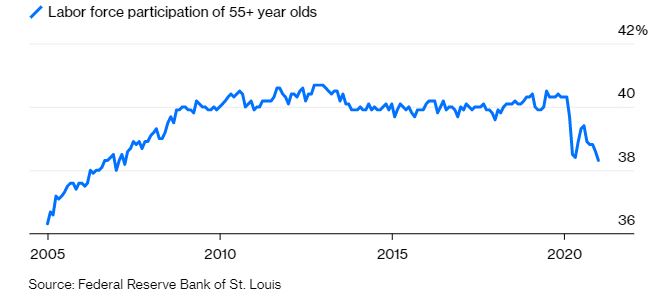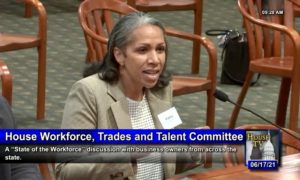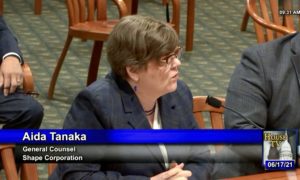MICHauto Testifies in Lansing on Solutions for State’s Labor Shortage
June 30, 2021
The automotive and mobility industry provides over 1.1 million direct and indirect jobs in the state of Michigan, more than $71 billion in compensation and benefits, $9 billion in state and local taxes, and generates over $304 billion annually. With such an extensive footprint in the state’s economy, the automotive industry is susceptible to market or labor force issues. Consequently, the COVID-19 induced labor shortage severely impacts the industry, which will ultimately hurt Michigan’s ability to have a full and robust economic recovery.
In his testimony, Stevens highlighted that labor issues were a problem before COVID-19, but the pandemic has only exacerbated the situation. The unemployment rate in February of 2020 in Michigan was 3.7%. Today it is 4.9% (better than the national average of 6.1%), but the labor force participation is at 58.7%, which places Michigan a troubling 42nd in the nation.
In a May poll of registered Michigan voters, the Detroit Regional Chamber found that 22.2% of those employed before COVID-19, but who were no longer looking for a job were over 50 (13.6% 65 years or older). This tracks with data from the Federal Reserve Bank of St. Louis that shows labor force participation of workers over the age of 55 has fallen 2% since the start of the pandemic, resulting in two million fewer workers nationwide. This trend has a particularly harmful impact on the mobility industry, where National Association of Manufacturers’ data showed that nearly one in four manufacturing workers are age 55 or older before the pandemic.

In addition to older workers leaving the labor force, Stevens pointed to four additional causes of the labor shortage in his testimony:
- The impact of unemployment insurance and supplemental benefits has impacted the labor force participation and a willingness to work.
- The need to stay home to care for children or older adults. In late March, the Census Household Pulse showed that 6.3 million people were not working because of a need to care for a child, not in a school or daycare center, and a further 2.1 million were caring for an older person.
- Health concerns and personal safety issues are impacting participation. The Chamber’s May poll found that 22.9% said they did not feel safe or cited COVID-19 safety.
- According to a detailed study out of the University of Minnesota, there is a strong correlation between vaccination rates and employment rates. Michigan ranks 23rd in the nation for vaccinations. Industry leaders are very concerned about its low rates, given the looming variants and changes in seasons and people’s behaviors.
Solutions

Lunsford, Stevens, and Tanaka highlighted that simply raising wages is insufficient. The industry has been increasing wages to match or exceed competitors like Amazon and still are struggling to fill jobs at every level of the organization.
“Shape has raised its wages, offered flexible work arrangements, and located child care services for our team members,” said Tanaka during testimony. “These are the right things to do for our Shape family, but further illustrate that the cost of doing business in this state is going up.”

Policy solutions that improve educational opportunities and increase talent in the labor market are critical for Michigan to be competitive in the long term. The Michigan Department of Labor and Economic Opportunity (LEO) estimates that 75% of the jobs of the future will require a postsecondary degree. However, only 48.6% of Michigan adults currently have a two-year, four-year, or professional certificate. Both government and business leaders have significant roles to play in helping to close that gap through high school apprenticeship programs, supporting fast-track training programs at local community and technical colleges and on-the-job training programs.
Stevens described the challenge and opportunity as he concluded his testimony, “We need to do everything we can to help the short-term issue, but the most important thing is to shape the future. Our collective job is to do everything we can to support the companies that make their home our state and provide livelihoods to Michiganders. If they are going to compete and grow, and if we are going to attract new companies it will only happen if we have skilled and motivated employees for the jobs of today and for the future.”
